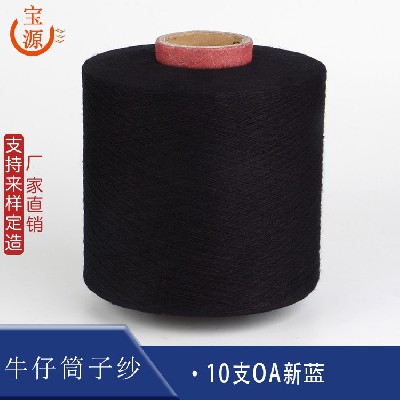The knitting denim factory introduces the washing methods and types
1. General washing means general washing. It's just to change the washing we know about everyday to mechanization. The water temperature is about 60 ° - 90 ° C, and a certain amount of detergent is added. After about 15 minutes of general washing, the water is added with softener, making the fabric more soft, comfortable, and visually more natural and clean. Generally, general washing can be divided into light general washing, general washing and heavy general washing according to the length of washing time and the amount of chemicals used. Generally, the light general washing is about 5 minutes, the general washing is about 15 minutes, and the heavy general washing is about 30 minutes (this time is not accurate). There is no obvious boundary between the three washing methods.
2. Stone washing/stone washing (STONE WASH) means adding a certain amount of pumice in the washing water to polish the pumice and clothes. The water level in the polishing tank is carried out at the low water level where the clothes are thoroughly soaked, so that the pumice can contact the clothes well. General washing or rinsing can be carried out before and after grinding. According to different requirements of customers, yellow stone, white stone, AAA stone, artificial stone, rubber ball, etc. can be used for washing to achieve different washing effects. After washing, the cloth surface will appear gray and stale, and the clothes will be slightly to severely damaged.
3. SAND WASH Sand washing uses some alkaline and oxidizing additives to make the clothes fade and decay after washing. If it is used with stone grinding, a layer of soft frost white fluff will appear on the surface of the cloth after washing. Adding some softeners can make the washed fabric soft and soft, and then improve the comfort of wearing.

4. ENZYME WASH enzyme is a kind of cellulase, which can degrade the fiber structure at a certain PH value and temperature, so that the cloth surface can be mildly faded, depilated ("peach peel" effect), and obtain a lasting softening effect. It can be used with stone or replace stone. If it is used with stone, it is generally called ENZYME STONE WASH.
5. Bleach WASH In order to make the clothes have a bright or bright appearance and a soft feel, it is necessary to rinse the clothes, that is, after washing the clothes with clean water, heat them to 60 ° C, add an appropriate amount of bleaching agent according to the depth of the bleaching color, and make the color match the plate within 7-10 minutes. During operation, the direction of adding bleach should be the same as the direction of the rotary cylinder to prevent bleach from falling directly on the clothes because it can not be diluted with water as soon as possible, which may cause partial bleaching. Before bleaching, the water level in the tank should be slightly higher to dilute the bleaching water. After the clothes are bleached, neutralize the remaining bleaching water in the water with large (small) soda (Na2CO3, NaHCO3) to stop the bleaching completely. After the water has been cleaned, add detergent, fluorescent brightener, hydrogen peroxide, etc. in the water temperature of 50 ° C for the final washing, neutralization of PH value, fluorescent brightening, etc., and finally carry out the softening treatment. Rinsing can be divided into oxygen bleaching and chlorine bleaching. Oxygen bleaching uses the oxidation of hydrogen peroxide at a certain PH value and temperature to damage the dye structure, and then achieve the purpose of fading and whitening. Generally, the bleaching surface will turn slightly red. Chlorine bleaching uses the oxidation of sodium hypochlorite to damage the dye structure, and then achieve the purpose of fading. The bleaching effect of chlorine bleaching is rough, and it is mainly used for washing indigo denim. After bleaching the plate, neutralize the residual chlorine in the water and clothes with the sea wave to stop the bleaching, and then conduct the stone grinding after bleaching, which is called the stone bleaching (BLEACH STONE)
Article source: knitted denim factory http://mkiller.cn/
-
10-15
Knitted denim factory: weaving process of knitted denim
Weaving technology of knitted jeansThe application of knitted jeans in life can be said to be many, and the advantages of knitted jeans are also many, so it has been widely used in the clothing indust
-
07-08
The knitting denim factory introduces the washing methods and types
1. General washing means general washing. It's just to change the washing we know about everyday to mechanization. The water temperature is about 60 ° - 90 ° C, and a certain amount of detergent
-
04-08
Characteristics of coated denim
Coated denim refers to a kind of post-processing product of denim, which is evenly coated with macromolecular compounds that can form a film on the surface of denim to change the appearance, style or
-
03-04
The reason why elastic jeans have elasticity
Now we all love beauty and attach importance to the maintenance of body shape. Many people will choose some elastic clothes to highlight the curve when they have attractive body shape. Elastic jeans h
